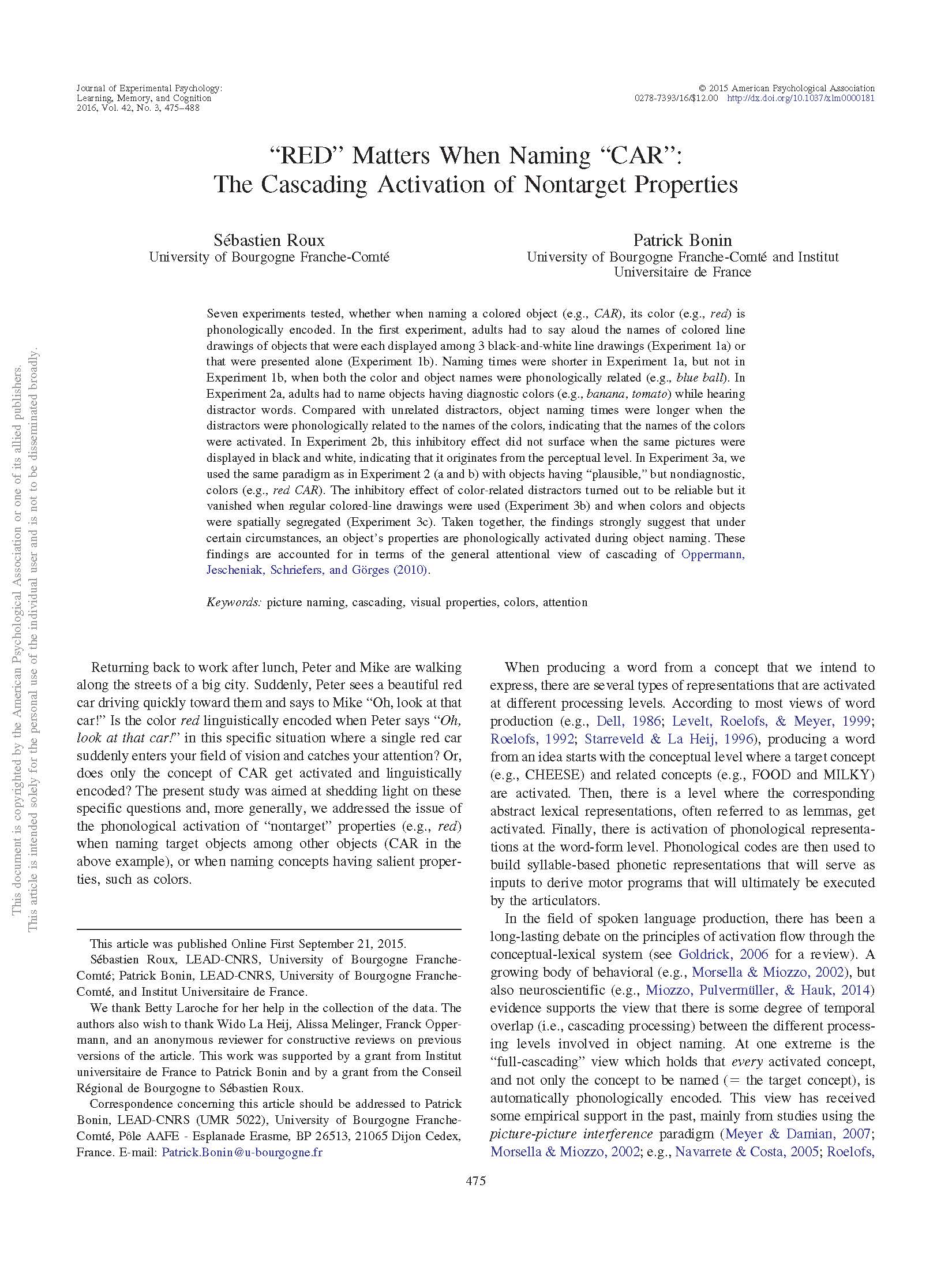Seven experiments tested, whether when naming a colored object (e.g., CAR), its color (e.g., red) is phonologically encoded. In the first experiment, adults had to say aloud the names of colored line drawings of objects that were each displayed among 3 black-and-white line drawings (Experiment 1a) or that were presented alone (Experiment 1b). Naming times were shorter in Experiment 1a, but not in Experiment 1b, when both the color and object names were phonologically related (e.g., blue ball). In Experiment 2a, adults had to name objects having diagnostic colors (e.g., banana, tomato) while hearing distractor words. Compared with unrelated distractors, object naming times were longer when the
distractors were phonologically related to the names of the colors, indicating that the names of the colors were activated. In Experiment 2b, this inhibitory effect did not surface when the same pictures were displayed in black and white, indicating that it originates from the perceptual level. In Experiment 3a, we used the same paradigm as in Experiment 2 (a and b) with objects having “plausible,” but nondiagnostic, colors (e.g., red CAR). The inhibitory effect of color-related distractors turned out to be reliable but it vanished when regular colored-line drawings were used (Experiment 3b) and when colors and objects were spatially segregated (Experiment 3c). Taken together, the findings strongly suggest that under certain circumstances, an object’s properties are phonologically activated during object naming. These findings are accounted for in terms of the general attentional view of cascading of Oppermann, Jescheniak, Schriefers, and Görges (2010).
“RED” matters when naming “CAR”: The cascading activation of nontarget properties
